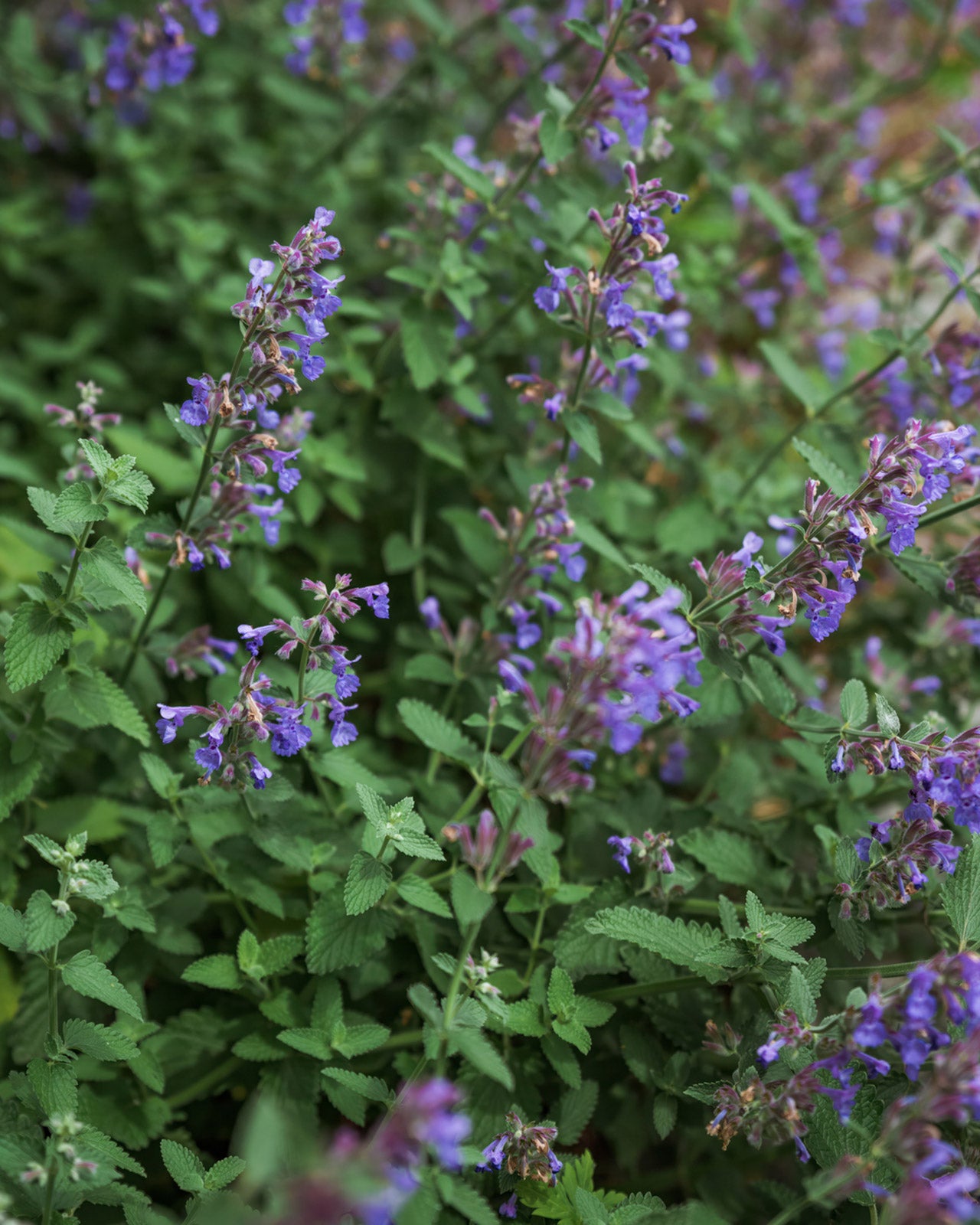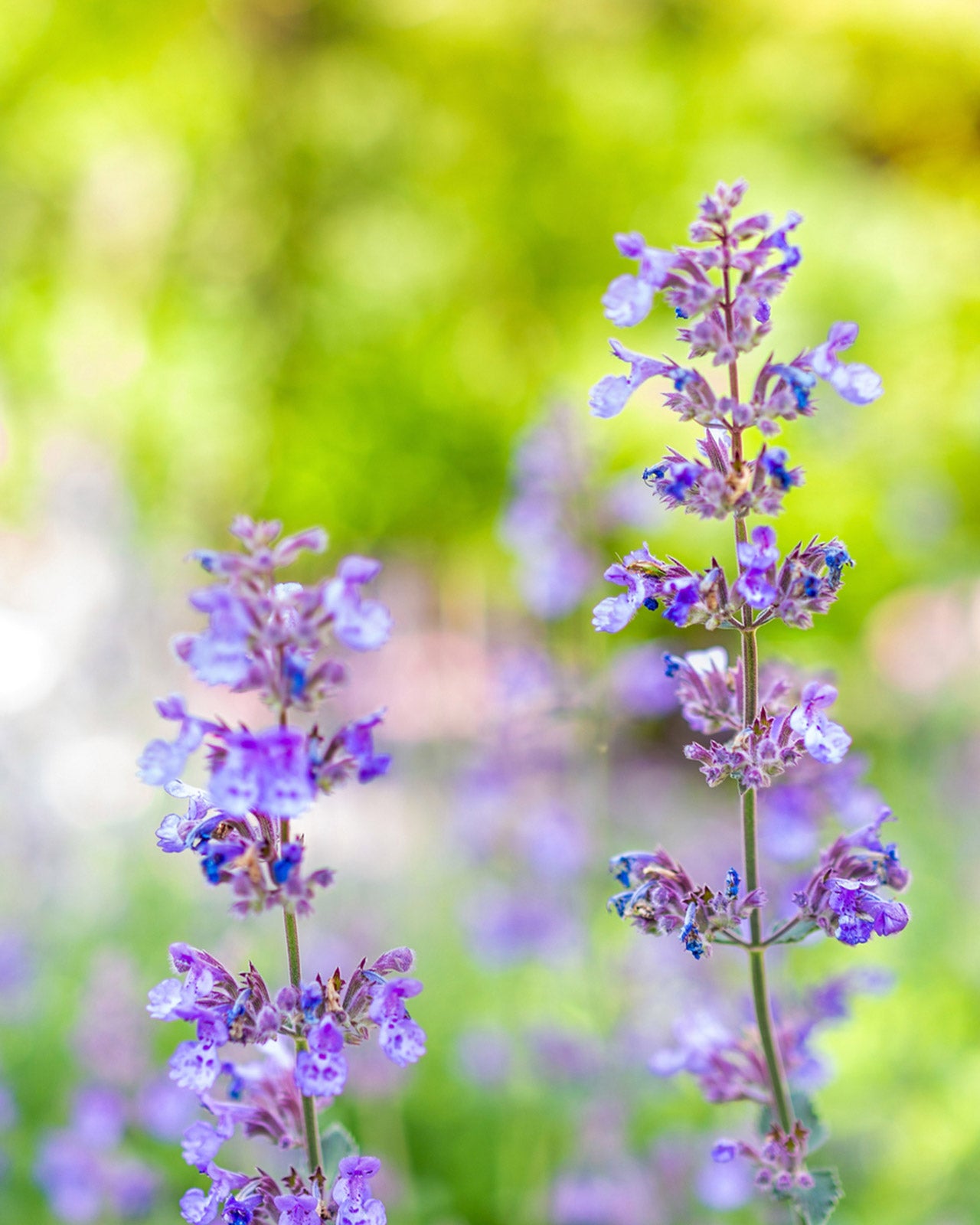

-
Why we like this plant
Nepeta 'Walker's Low' is a favourite among gardeners for its incredible flowering period, pollinator-friendly nature, and tolerance to dry conditions. Its soft, flowing habit makes it a fantastic choice for pathways, mixed borders, and mass planting.
-
About this plant
Nepeta 'Walker's Low' is a compact yet robust catmint variety that forms soft mounds of fragrant, silver-grey foliage. It produces an abundance of lavender-blue, tubular flowers from late spring to early autumn, creating a stunning haze of colour. This low-maintenance, deer-resistant, and drought-tolerant plant is perfect for edging pathways, spilling over walls, and softening borders. A magnet for bees and butterflies, it thrives in well-drained soil and full sun, making it an excellent choice for Mediterranean, cottage, and wildlife gardens. Despite its name, 'Walker's Low' is a mid-heightvariety rather than a dwarf type.
-
Key features
- Lavender-blue flowers from late spring to early autumn
- Silvery-grey, aromatic foliage for year-round interest
- Attracts bees, butterflies, and other pollinators
- Drought-tolerant and deer-resistant
- Perfect for edging, borders, and cottage gardens
-

Height and
spread -

Growth
habitCompact, spreading, clump-forming
-

Moisture
Drought tolerant; prefers dry to moderately moist conditions
-

Position in
the GardenBorders, edging, cottage gardens, Mediterranean gardens, wildlife-friendly planting
Planting guide
- Plant in well-drained, sandy, or loamy soil
- Position in full sun for best flowering
- Space plants 50-60cm apart to allow for spreading
- Water well after planting to help establish roots
Care tips
- Plant in well-drained soil in full sun
- Water occasionally; highly drought-tolerant once established
- Deadhead regularly to prolong flowering
- Cut back by half after the first flush to encourage a second bloom
- Divide clumps every few years to maintain vigour
Winter care
- Fully hardy and requires no winter protection
- Leave some stems intact for winter interest and wildlife
- Cut back dead growth in early spring to promote fresh shoots











